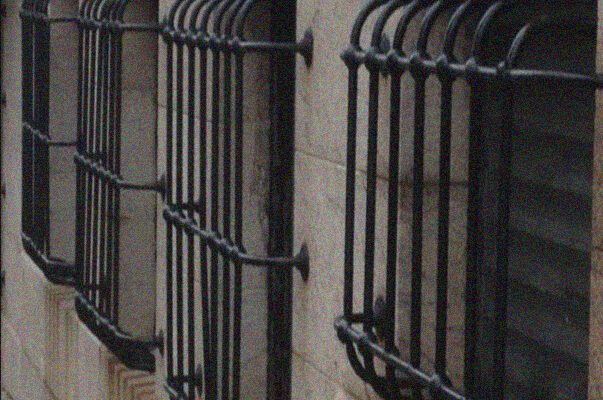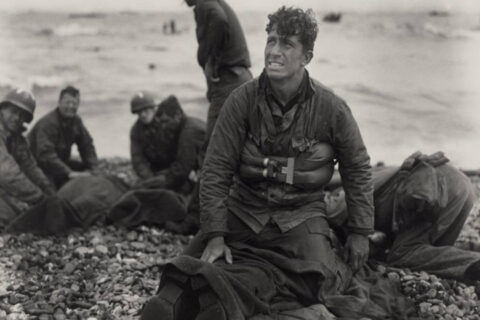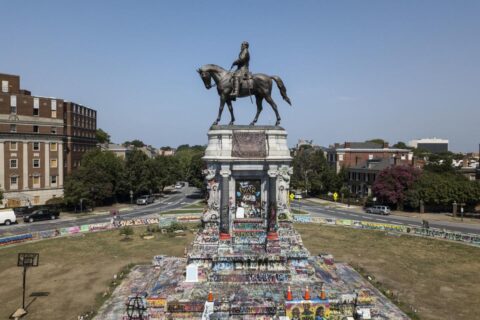In wars, it is considered inappropriate or insensitive to speak in terms of the monetary costs in comparison to the human casualties. It is no different when discussing the war on crime. Nevertheless, the victims of violent crimes are not the only ones who have to pay the price for lawlessness and disorder. We are all victimized for long after the initial assaults against our liberty and security have taken place. We all know what people really mean to say whenever they speak of moving to smaller towns with quiet neighborhoods, clean streets, and good schools. That is all politically correct code for “we want to get as far away from blacks as we can afford.”
“White flight,” the phenomenon of White people leaving cities and moving to suburban or rural areas, but then commuting back into the cities for work, has amounted to one of the worst wastes of time, energy, and money in history. It has become an unofficial toll on Whites, which most only begrudgingly pay to avoid the risk of being robbed or murdered by the government-subsidized savages living within city limits. For many Whites, staying in the cities would place them in an extremely dangerous situation without an upside. Police can no longer be trusted to protect taxpayers. The Supreme Court has even ruled that police do not have any constitutional duty to protect citizens. However, should a White citizen have to use force to defend himself or his family, there is a better than average chance of the police arresting him on the orders of leftist prosecutors. Blacks are tribal by nature and care nothing for the rule of law. They lack the intelligence necessary to empathize with the victims of violent crimes or to hypothesize about how they themselves could be victimized by violent criminals in the future. Therefore, when blacks are elected to positions of power, they usually abuse the authority entrusted to them to enrich themselves at the expense of the taxpayers and to target their political rivals for harassment.
Blacks are well known to commit a disproportionately high percentage of violent crimes when compared and contrasted to the official numbers of them residing in given regions. Despite only comprising about 13% of the U.S. population, blacks commit at least 43% of all violent crimes, 52% of homicides, and 57% of robberies. In Alabama alone, blacks account for 61% of violent crime, 74% of homicides, and 77% of robberies. Suspiciously, Orleans Parish of Louisiana refuses to provide racial data on criminal perpetrators to the FBI. Even without the statistics from New Orleans, blacks account for 58% of all violent crime, 67% of homicides, and 64% of robberies in the State of Louisiana. Last year, New Orleans was named one of the ten most dangerous cities in the world. The other nine cities on the list are all in Mexico and caught in the middle of organized criminal gang wars between rival cartels. Maybe that’s why the city government refuses to release crime data to the public. They’re probably afraid that tourism would be negatively affected by such news.
The national average cost of a home security system is about $750. A monitored system will typically cost an extra $25 to $50 per month for the duration of the service contract. The national average cost of having steel or wrought iron burglar bars installed on a home or business runs between $100 and $150 per window. Now, some insurance companies will give discounts to customers who take such precautions to prevent or discourage burglaries, but they will likely charge more for both homeowner’s insurance and auto insurance if a customer lives around a high crime area. Insurance providers will routinely raise the prices of their premiums on all of their customers in a given county if there are disproportionately high numbers of traffic accidents and automotive thefts in the same zip code.
Altogether, such inflated and rightfully unnecessary expenses impoverish citizens and reduce the quality of our lives one bill or tax at a time. It is truly a cruel and slow death of a thousand cuts.
-By John S

O I’m a good old rebel, now that’s just what I am. For this “fair land of freedom” I do not care at all. I’m glad I fit against it, I only wish we’d won, And I don’t want no pardon for anything I done.






The following is excerpted from an online English translation of Jean Raspail’s ‘The Camp of the Saints’. Does any of it sound familiar?
“Even when the beast directed its violence at inequalities of lesser dimension: when grocers in some poor part of town were attacked and beaten; apartments, left vacant for the summer, invaded by African squatters; shops looted, and their merchandise scattered through the slums; shady financiers grilled by guerrilla tribunals and convicted; abusive bosses, cleverly chosen, kidnapped and held … No, not a soul protested! And justice itself, shaken to the roots of its majestic calm, uncertain whether its laws had been made to bully society or defend it, never failed to agree that, indeed, there had been extenuating circumstances, never failed to free its prisoners, who would leave the courtroom in a cloud of glory. Enough to demoralize those men and women who considered themselves good law-abiding citizens; in other words, almost the entire population. In short, through its own diabolical devices, the beast had tucked cops and courts of the Western World safely away in its pocket, and was free now to indulge in what it termed “the shaping of opinion.” And so, once again, opinion was shaped to believe that racism in the cause of self-defense is the scourge of humanity. p. 43. Day by day, month by month, doubt by doubt, law and order became fascism; education, constraint; work, alienation; revolution, mere sport; leisure, a privilege of class; marijuana, a harmless weed; family, a stifling hothouse; affluence, oppression; success, a social disease; sex, an innocent pastime; youth, a permanent tribunal; maturity, the new senility; discipline, an attack on personality; Christianity … and the West … and white skin …” p. 38.
Jean Raspail, ‘The Camp of the Saints’, trans. Norman Shapiro, 1975
Good article